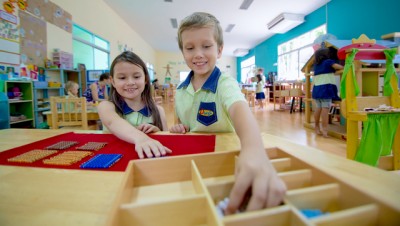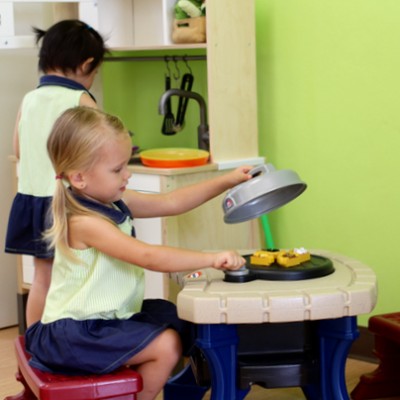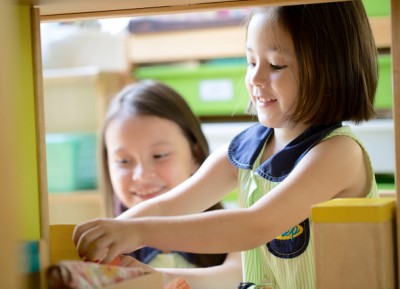 Learning Corners is a special learning activity for K2 and K3 Prep children which strongly promotes Independence and Love of Learning. Basically, it involves all the children playing and working on various tasks in the same classroom, under the supervision of 3 or more teachers.
Learning Corners is a special learning activity for K2 and K3 Prep children which strongly promotes Independence and Love of Learning. Basically, it involves all the children playing and working on various tasks in the same classroom, under the supervision of 3 or more teachers.
Philosophy: Learning Corners is based on the child-centered approach to teaching young children – it gives children the freedom to choose what to do and promotes socialization in learning. It also draws from the Montessori tradition of letting children from a broad age range learn together, working with tasks that build concentration and encourage independent and investigative learning styles.
Corners: The classroom contains 11 Learning Corners, each containing materials, apparatus and toys for learning a different subject. Corners include English, Thai, Chinese, Maths and Arts as well as Montessori, Science, Blocks, Book Corner, House and Dressing corner.
Timing: Learning Corners is held each afternoon from 1:00 to 2:15. Typically the children visit 3 corners for around 30 minutes each. A small bell is rung to indicate that it’s time to tidy up and visit another corner.
Teachers: Teachers are stationed in 3 of the following corners: English, Thai, Chinese, Maths and Art corners, to work closely with the children. Children in other corners play and work without direct supervision although teachers are always nearby to give assistance if needed.
Learning Corners Board: The Board gives each child a menu of 3 Learning Corners to visit each afternoon. The children learn to read the Board and follow its directions. The content of the board can be manipulated by the lead teacher, giving some control over where the children learn and play. For example, the board is usually set up so that children must visit the corners for learning language, maths, Montessori and Art at least once a week.
Freedom: Children get at least one opportunity per day to have free choice over which corner to visit. This gives them more motivation to work and play. Children learn to make decisions and have self-determination.
Self Discipline: With freedom comes responsibility. Children learn to follow classroom rules, use their time constructively and respect the learning spaces of others.
Small groups: At any given time up to half of the class is engaged in their own tasks, leaving teachers free to focus on small groups or one-on-one with remaining children. This is an opportunity for teachers to meet children’s individual needs in core learning areas.
